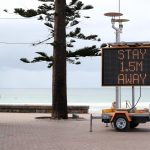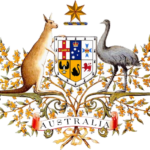The first home of TCG

Mike Barraclough (7 June 1943 – 1 October 2022) was a long-serving staff member at TCG, one of Australia’s oldest information technology firms. Open Forum is proud to publish a series of extracts from his unfinished memoir as a tribute to him and his work in the domestic computer sector.
In the second part of his retrospective, Mike Barraclough recalls the humble beginnings of TCG, a firm which soon grew into a major player in the Australian technology industry of the 1970s.
The Australian mining share market in the 1960s was akin to the dot.com market of the late 1990s, and the epitome of these stocks was Poseidon.
There was great demand for nickel due to the Vietnam War and a shortage of the metal due to issues with the main Canadian supplier. In September ‘69, Poseidon made a major nickel discovery in WA, and their share price, which had been trading at around $0.80, shot up to $12.30 by the start of October. One UK broker suggested the value might increase up to $382 a share, a 500 times expansion in 60 days.
Obviously at these dizzy heights many lucky people wanted to take their profits, but they’d got the bug and were trying to find a home for the next boom stock. All this money trying to find a fruitful home led to many exploration companies trying to list on the market.
Of course, to do this they had to provide some optimistic evidence of their potential. Here’s where our mapping and automated analysis came in. Anything that would automate the process, hence hasten the process, was money well spent. A picture speaking a thousand words – or $$.
Enter the colourful character of Ken McMahon, who had been a geologist with a varied range of companies and had an energetic vision of the mining market, He scraped together $200,000 and formed Mineral Securities.
Minsec hit the wave at exactly the right time. This was the era of Australia’s greatest mineral discoveries at Mount Tom Price, Mount Newman, Weipa and Kambalda. Minsec quickly became the largest share trader in Australia, moving as many as 10 million shares and options a day at a time when all trades were done manually.
Minsec’s profits from the sharemarket were reinvested in resources. By 1970 – five years after its formation – Minsec had turned $200,000 into a group worth more than $100 million.
By early 1970, Australia was the hottest mining market in the world and Minsec was its hottest stock.
Then the wheels fell off. In early 1970, the mining market started to break. Minsec thought it would recover in July and plunged on Robe River and Poseidon. Both kept heading down and Minsec lost millions. In the end, Ferrier Hodgson were brought in to liquidate the company.
The birth of TCG
TCG had its origins in the failure of Mineral Securities. Minsec had established a technical subsidiary to provide computing services both to Minsec and to external customers. This subsidiary was one of the casualties.
Five youthful and enthusiastic staff members of the technical team found themselves unemployed. But they had a few customers, enough to kick-start a company but hardly enough business to “retire” on. These members were Anka van Bergen, Peter Fritz, Neil Walker, Phil Bratel and Malcolm Smith, a disparate bunch indeed.
They set up shop in Crows Nest, a northern suburb of Sydney. It was a good-sized open plan space, above one of those shops selling products to make your cars “go faster” fancy wheels, and seats. It also almost enough parking spots to cope with the staff.
To backtrack a little, after returning to England, and unfortunately having had to donate the gibbon to a wildlife park, I found myself yet again moving to warmer climes, this time working in Jakarta where a company called ElNusa employed a few expatriates to bring the wonders of computing to Indonesian enterprises.
Sadly, this was not to be and the promised high salaries, low taxes and luxury accommodation were proving illusory. Despite the 25% of revenue that went out as “donations” to win contracts, we expats were somewhat disillusioned and potentially trapped.
In the midst of this depression came a phone call from Neil Walker of TCG in Australia. I had almost forgotten them, and the call itself was almost a miracle in those days when it was reputedly quicker to send a driver across Jakarta with a message, rather than try and get through on the phone. Nevertheless, after some haggling regarding money, and a bit of subterfuge regarding a visa into Australia, there I was on yet another red-eye flight to Sydney.
Arriving tired, un-showered, unshaved, and dressed in “Economy casual,” I directed my cab driver from the airport to Crows Nest. I stumbled upstairs, travel bags and all, into the TCG office to be welcomed like some long-lost relative, even to the extent of hugs and kisses on the cheek from Peter Fritz, an off-putting but endearing, presumably Eastern European greeting.
There is no rest for the wicked, so off we went to Berlei-Hestia, a major women’s underwear manufacturer close to Central Station. They were looking for an “on-line Order Entry system”, and TCG had offered themselves as consultants to scope out a solution. Nothing ventured nothing gained, and so I spent my first morning discussing their requirements and being shown photos of their products and voluptuous models – welcome to Australia.
Returning to Crows Nest, I took a good look at what I had gotten into. The structure of TCG was a little difficult to understand on the surface, there was certainly an elite of the founder members, but little if any hierarchy. The two key players were Peter Fritz and Neil Walker. Peter, who focused on financials and the company’s wellbeing, was the closest the company had to a salesman, while Neil was more the thinker and was absorbed in the technology.
The other members of the upper echelon seemed dedicated to their own individual fiefdoms. Anker van Bergen, the only female member of the elite, ran legacy applications on CDC’s mainframe, while Phil Bratel busied himself with a new fangled on-line order entry system for Capitol Motors. Malcolm Smith completed the group, and below this elite, a coterie of software developers worked on a variety of projects, from the Capitol Motors application to a geological map of Australia led by the erudite Dr Ron Forbes.
As well as this mélange of developers, Peter had set up TCG Systems Automation as a separate entity to avoid the payroll tax on companies above a certain number of staff. This was headed by the stolid Bob Petrie, ably aided by the upcoming John Scheller.
This company was tasked with providing lucrative hardware support for the equipment they supplied. In those days, this was typically 15-20% of the hardware’s initial cost. Given this equipment had few if any moving parts and proved remarkably reliable, this was a profitable and not arduous task.
This was an area for future growth, and which carried a much lower risk than that of software development. The price of this service was also less elastic than the steadily falling purchase price of equipment due to ever increasing manufacturing competition.
Last but not least of these “businesses” was the lady’s room – the card punch department – which proved another steady revenue earner. In those days, instead of entering the data or program directly into the computer from a keyboard, an intermediary was required. In Europe, this input was paper tape, but in the USA and the rest of the world, it consisted of punched cards, thanks to the universality of IBM. All computer input was prepared off-line and so generated steady business for the Card Punch department of TCG for a few years until technology changed.
TCG inhabited the floor above the car accessory shop. At its front was a “Board Room” – essentially a lounge or meeting area with a couple of faux leather lounges and a coffee table which proved good for drinks on a Friday night. Next to this was the Engineering Department – TCG Systems Automation – with Card Punching tucked behind.
The rest of the space was open plan with desks scattered in no particular order, owing to the lack of windows and absence of favoured corner spots. Unfortunately, the building no longer stands, having long succumbed to the inevitable Sydney development of apartments and ground floor retail, but it was here that we plotted our progress.
Part three of this series will be published tomorrow. The cover photo by shows an IBM 26 Printing Punch for Standard Punch Cards at the Deutsches Museum in Munich. CC BY-SA 4.0.

Open Forum is a policy discussion website examining the social, political, economic, cultural and environmental issues of today. We welcome contributions and invite you to follow us on Twitter, Linkedin, Federated Press and Vivaldi Social. We #StandwithUkraine.












